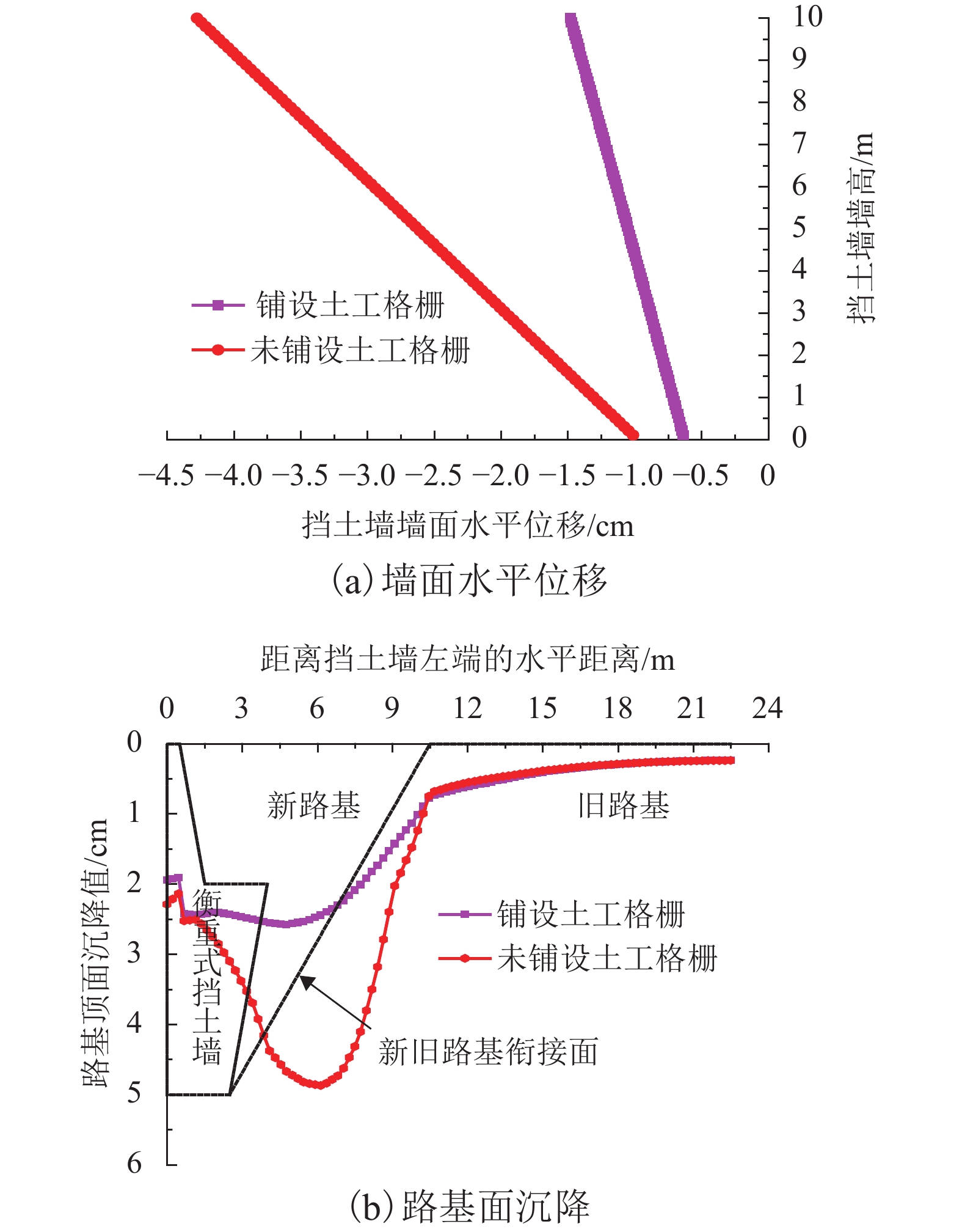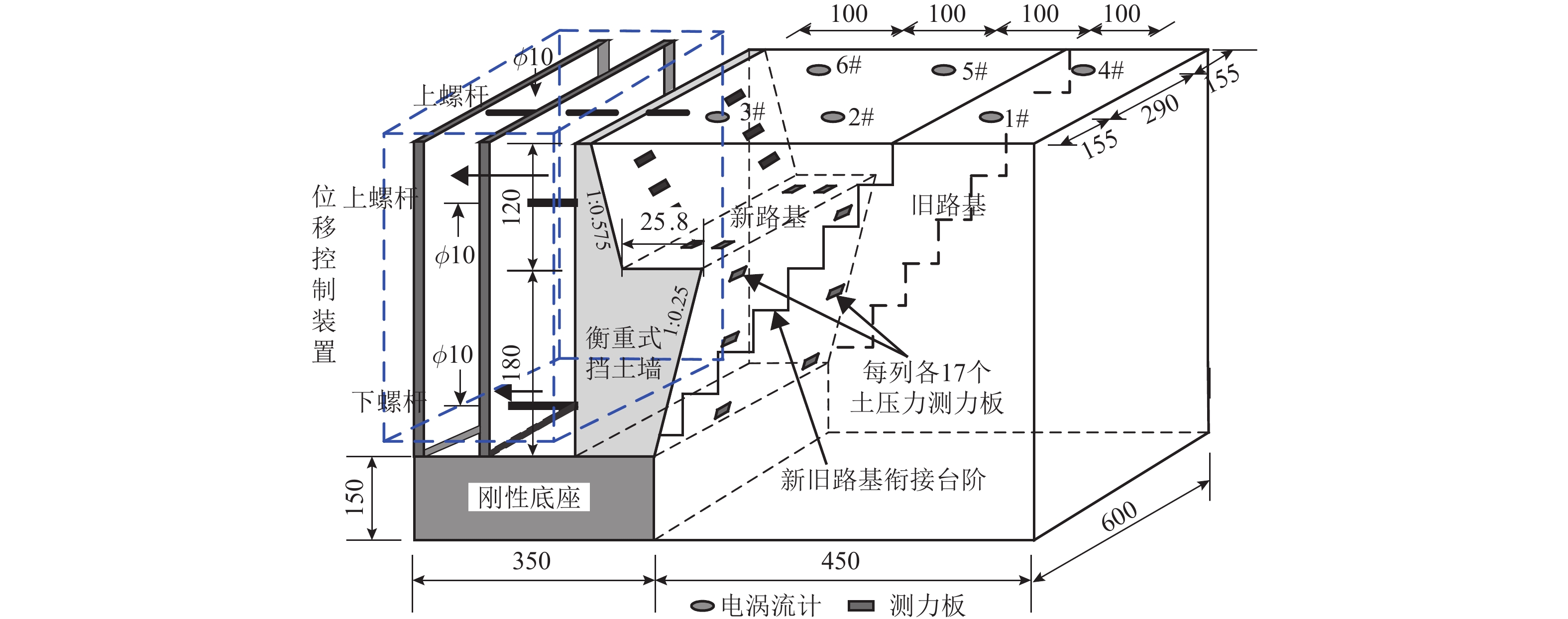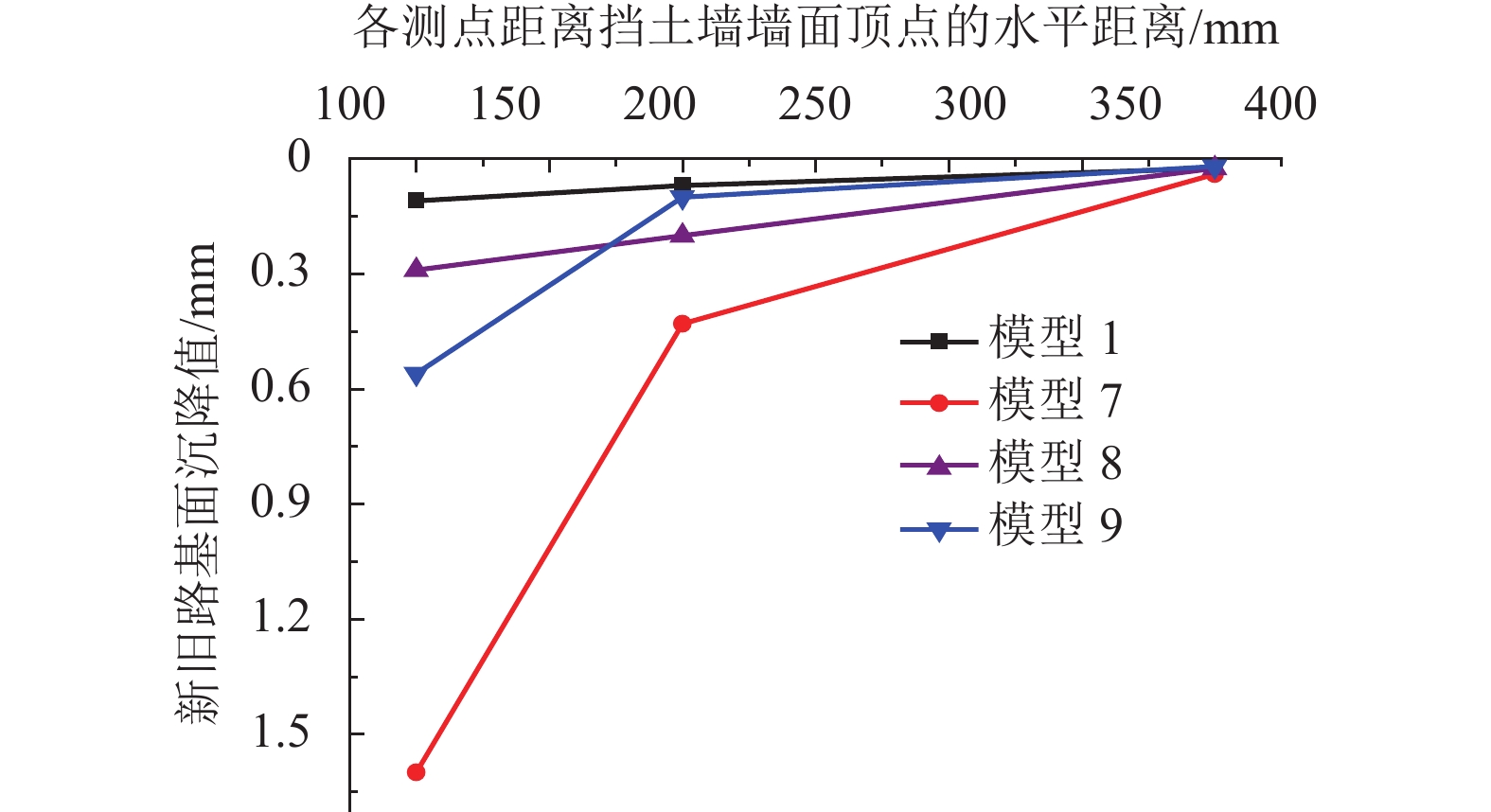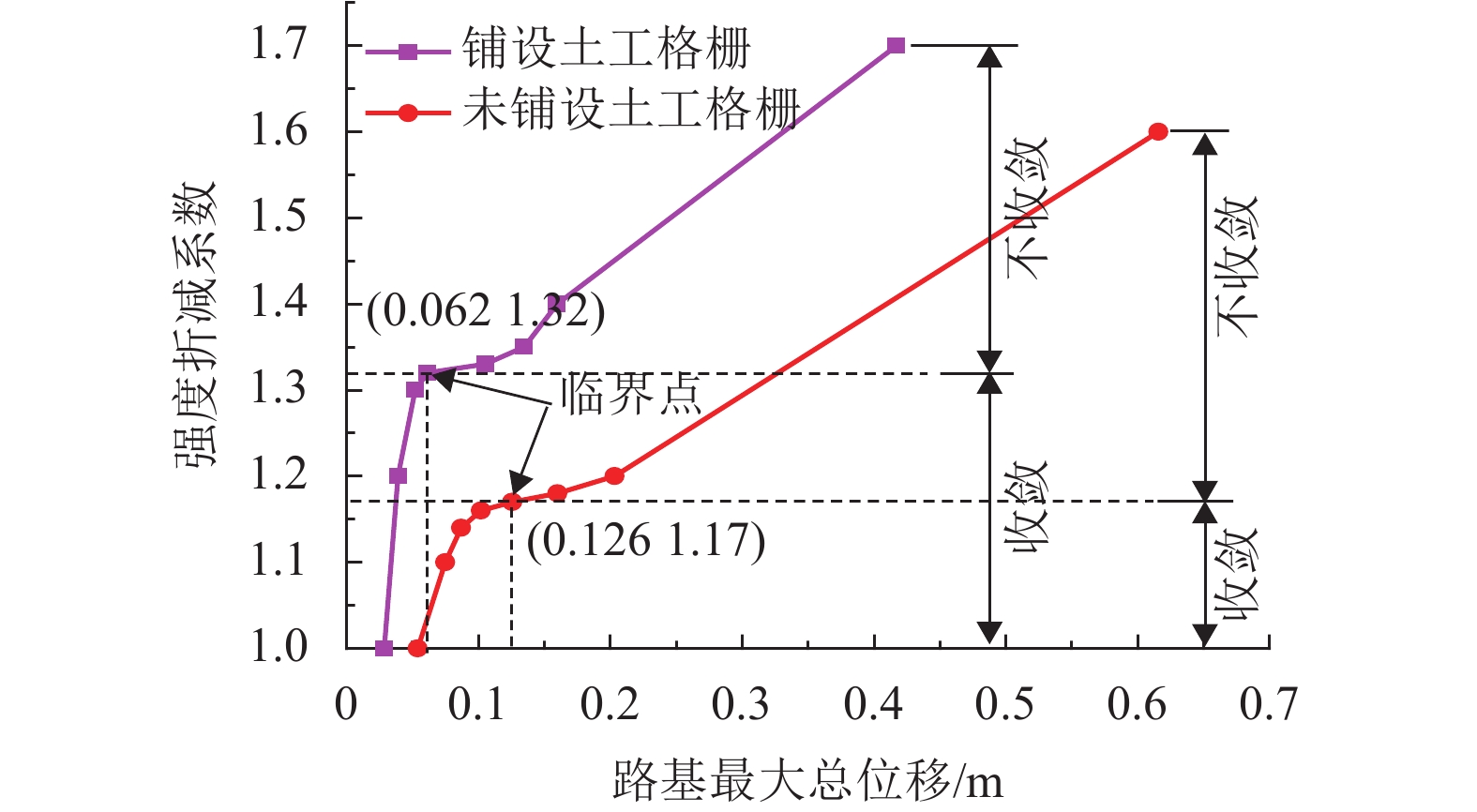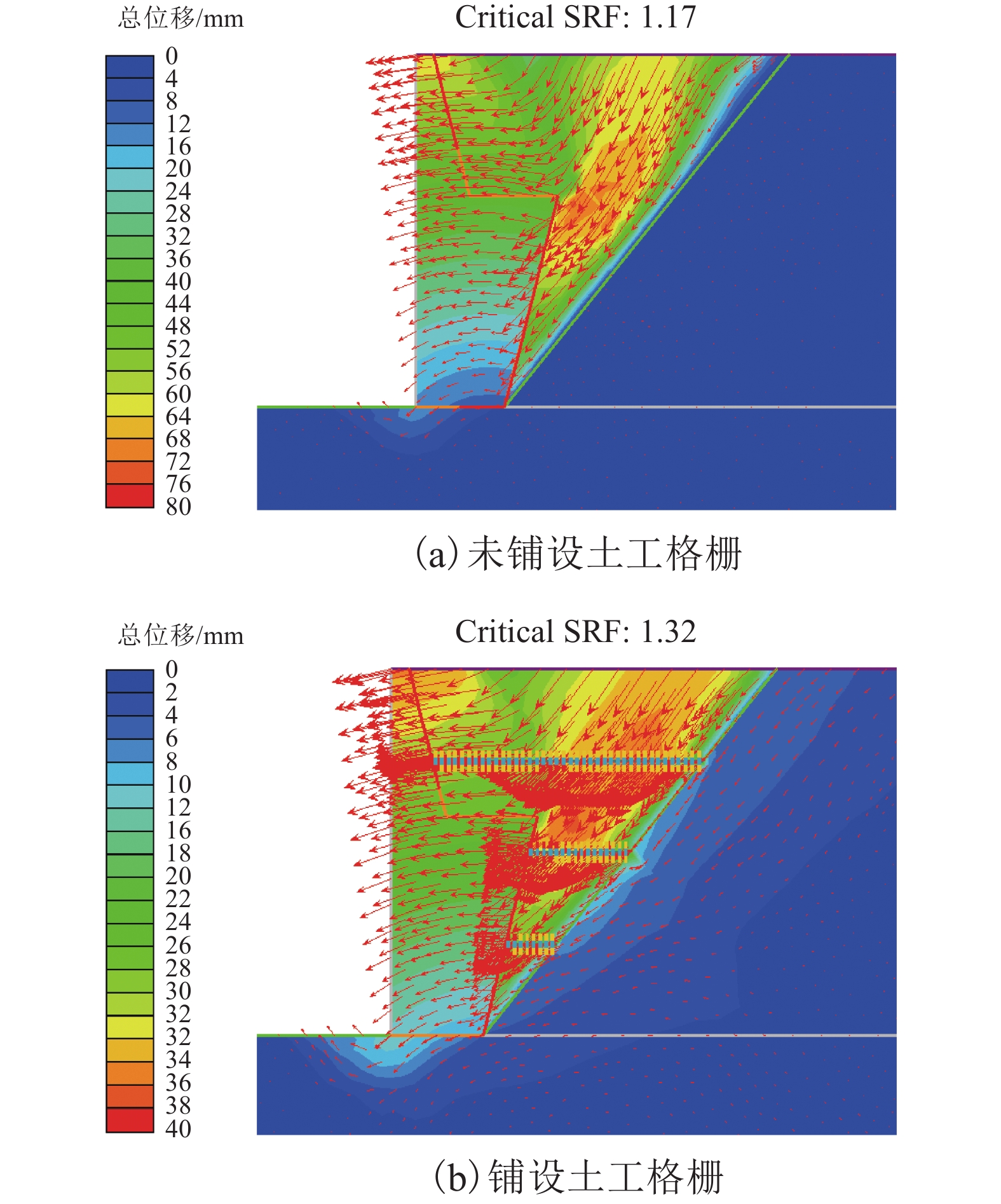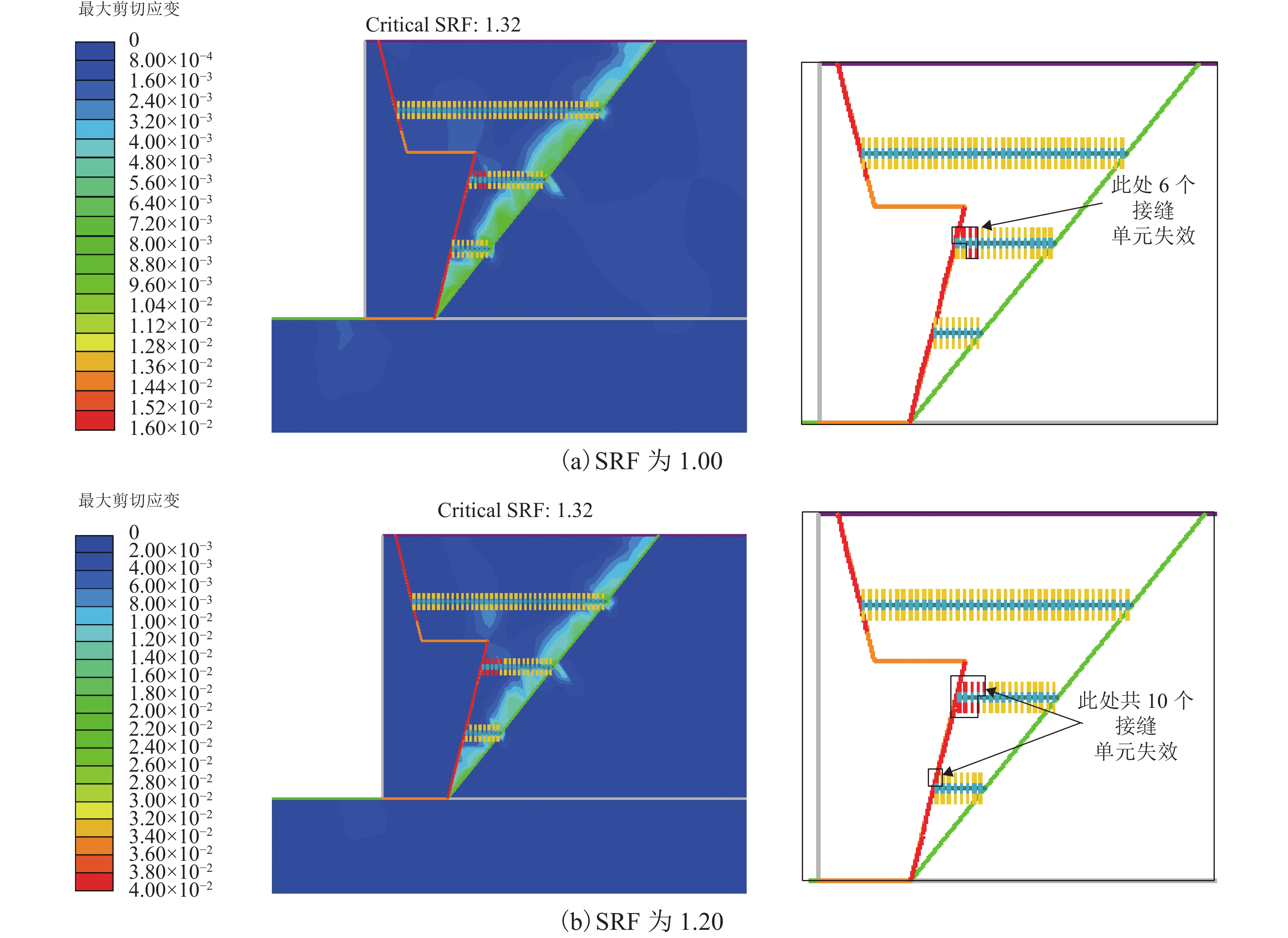Numerical Simulation on Stability Development of Geogrid Reinforced Widening Embankment with Rigid Retaining Wall
-
摘要: 为阐释山区公路刚性挡土墙拓宽加筋路基稳定性的动态演变规律及机理,结合山区公路路基拓宽改建多外设刚性挡土墙的特殊性,运用Phase2有限元软件,考虑土-结构相互作用,建立数值模型,所获加筋效果相关结论经离心模型试验宏观验证,开展基于剪切强度折减法的山区公路拓宽加筋路基稳定性分析,探究填土、土工格栅和填土-土工格栅界面三者力学响应动态演变规律及其对路基稳定性的影响. 研究结果表明:铺设土工格栅后路基面差异沉降减小47.1%,墙体最大外倾减小65.4%,路基稳定安全系数提高12.8%;随着剪切强度折减系数增加,填土-土工格栅界面单元滑移失效,但未决定路基稳定性,上层位衡重台外边缘处土工格栅的拉断失效将导致轴向拉力骤降,诱发拓宽路基失稳破坏.Abstract: Rigid retaining walls are widely used in highway widening embankments in mountainous regions. To interpret the dynamic development law and mechanics of geogrid reinforced widening embankment with the rigid retaining wall in mountainous region, combined with the particularity of the rigid retaining wall, the finite element software Phase2 and strength reduction method were employed to analyse the stability of geogrid reinforced highway widening embankment in such regions. The interactions between soil and structure were introduced in the established numerical model. The dynamic development law of the mechanical response of the filling, geogrid and filling-geogrid interface, and their influences upon the embankment stability were also discussed. The findings regarding the reinforcement effect obtained from the numerical simulation were verified macroscopically using the geotechnical centrifuge model test results. The results showed that the embankment surface differential settlement was reduced by 47.1%, the maximum wall extraversion was reduced by 65.4%, and the embankment stability factor was increased by 12.8% with the geogrid reinforcement. With the increase in the shear reduction factor, the joint elements between the filling and the geogrid failed (slipped), but this slip was not responsible for the failure of the subgrade. Thus, the axial tension decreased suddenly owing to the failure of the geogrid in the upper layer, which was located outside the edge of the balancing platform. The tensile failure of the geogrid induced the instability and failure of widening embankment.
-
表 1 土体与挡土墙材料参数
Table 1. Soil and retaining wall material parameters
对象 弹性模量/MPa 泊松比 重度/(kN•m–3) 粘聚力(峰值、残余值)/kPa 内摩擦(峰值、残余值)/(°) 地基、旧路基 120 0.30 22 27、27 26.5、26.5 新路基 24 0.38 20 5、5 25.0、25.0 挡土墙 25 000 0.20 24 35、— 10.5、— -
廖军,陆阳. 对支挡约束下拓宽道路不均匀沉降的现场监测系统设计[J]. 路基工程,2004(4): 57-60LIAO Jun, LU Yang. The field monitoring system design to the widening road uneven settlement under the restriction of retaining[J]. Subgrade Engineering, 2004(4): 57-60 凌建明, 郑健龙, 唐伯明. 新老路基结合部处治技术研究报告[R]. 上海: 同济大学, 2003 李磊. 山区公路改扩建路基变形特性及稳定性研究[D]. 长沙: 长沙理工大学, 2012 万智,邓宗伟,刘宝琛,等. 山区拓宽公路挡土墙路基的受力与变形特征分析[J]. 岩土力学,2007,28(5): 921-926,938WAN Zhi, DENG Zongwei, LIU Baochen, et al. Loading and deformation characteristics of highway widened subgrade with retaining wall in mountainous region[J]. Rock and Soil Mechanics, 2007, 28(5): 921-926,938 张华,陆阳. 基于有限差分与离散元耦合的支挡结构数值计算方法[J]. 岩土工程学报,2009,31(9): 1402-1407ZHANG Hua, LU Yang. Numerical method for retaining structures based on coupled finite difference method and discrete element method[J]. Chinese Journal of Geotechnical Engineering, 2009, 31(9): 1402-1407 周炜. 山区改扩建路基施工及运行期变形特性研究[D]. 长沙: 长沙理工大学, 2012 蒋鑫,陈滔,吴玉,等. 衡重式挡土墙外倾对山区公路拓宽路基沉降的影响[J]. 湖南大学学报:自然科学版,2016,43(9): 136-143JIANG Xin, CHEN Tao, WU Yu, et al. Mountain road widening embankment additional settlement due to balance weight retaining wall extraversion[J]. Journal of Hunan University:Natural Science, 2016, 43(9): 136-143 张家国. 衡重式挡土墙受力及变形特性离心模型实验研究[D]. 成都: 西南交通大学, 2004 陆阳,廖敬梅,廖军. 高填方路基衡重式挡墙的变形及稳定的现场监测[J]. 中南公路工程,2006,31(4): 9-13LU Yang, LIAO Jingmei, LIAO Jun. Field monitoring of a gravity balanced retaining wall[J]. Central South Highway Engineering, 2006, 31(4): 9-13 中交第二公路勘察设计研究院有限公司. JTG D30—2015公路路基设计规范[S]. 北京: 人民交通出版社, 2015 蒋鑫,邱延峻,凌建明. 强度折减法软件在评价边坡稳定性上之比较[J]. 地下空间与工程学报,2008,4(2): 302-309JIANG Xin, QIU Yanjun, LING Jianming. Comparisons of strength reduction method softwares for slope stability analysis[J]. Chinese Journal of Underground Space and Engineering, 2008, 4(2): 302-309 GRIFFITHS D V, LANE P A. Slope stability analysis by finite elements[J]. Géotechnique, 1999, 49(3): 387-403 DAWSON E M, ROTH W H, DRESCHER A. Slope stability analysis by strength reduction[J]. Géotechnique, 1999, 49(6): 835-840 郑颖人,赵尚毅. 有限元强度折减法在土坡与岩坡中的应用[J]. 岩石力学与工程学报,2004,23(19): 3381-3388ZHENG Yingren, ZHAO Shangyi. Application of strength reduction FEM in soil and rock slope[J]. Chinese Journal of Rock Mechanics and Engineering, 2004, 23(19): 3381-3388 宋二祥,高翔,邱玥. 基坑土钉支护安全系数的强度参数折减有限元方法[J]. 岩土工程学报,2005,27(3): 258-263SONG Erxiang, GAO Xiang, QIU Yue. Finite element calculation for safety factor of soil nailing through reduction of strength parameters[J]. Chinese Journal of Geotechnical Engineering, 2005, 27(3): 258-263 蒋鑫,耿建宇,曾诚,等. 山区公路拓宽路基与衡重式挡土墙动态相互作用的数值模拟[J]. 岩土力学,2014,35(增刊1): 443-450JIANG Xin, GENG Jianyu, ZENG Cheng, et al. Numerical simulation of dynamic interaction between widening embankment and balance weight retaining wall in mountain region[J]. Rock and Soil Mechanics, 2014, 35(Sup.1): 443-450 耿建宇. 公路路基拓宽改建力学行为及典型工程对策研究[D]. 成都: 西南交通大学, 2013 钱家欢, 殷宗泽. 土工原理与计算[M]. 北京: 中国水利水电出版社, 1996: 44-106 柳军修,陈建峰. 刚/柔性组合墙面加筋土挡墙受力机制分析[J]. 西南交通大学学报,2015,50(6): 984-992LIU Junxiu, CHEN Jianfeng. Mechanical performance analysis of reinforced soil walls with flexible/rigid facings[J]. Journal of Southwest Jiaotong University, 2015, 50(6): 984-992 曹文昭,郑俊杰,周燕君,等. 三向土工格栅变形及筋土界面特性试验研究[J]. 西南交通大学学报,2016,51(5): 840-846CAO Wenzhao, ZHENG Junjie, ZHOU Yanjun, et al. Experimental investigation of deformation and geogrid-soil interface behavior of triaxial geogrid[J]. Journal of Southwest Jiaotong University, 2016, 51(5): 840-846 郑俊杰,周燕君,曹文昭,等. 不同网孔形状格栅加筋土界面特性试验研究[J]. 西南交通大学学报,2017,52(3): 482-488ZHENG Junjie, ZHOU Yanjun, CAO Wenzhao, et al. Experimental study of interface behavior of geogrids with different aperture shapes[J]. Journal of Southwest Jiaotong University, 2017, 52(3): 482-488 蒋鑫,凌建明,邱延峻. 加筋土路基稳定性分析[J]. 重庆交通大学学报: 自然科学版,2007,26(5): 80-83,133JIANG Xin, LING Jianming, QIU Yanjun. Stability analysis of embankement reinforced with geosynthetic[J]. Journal of Chongqing Jiaotong University:Natural Science, 2007, 26(5): 80-83,133 -




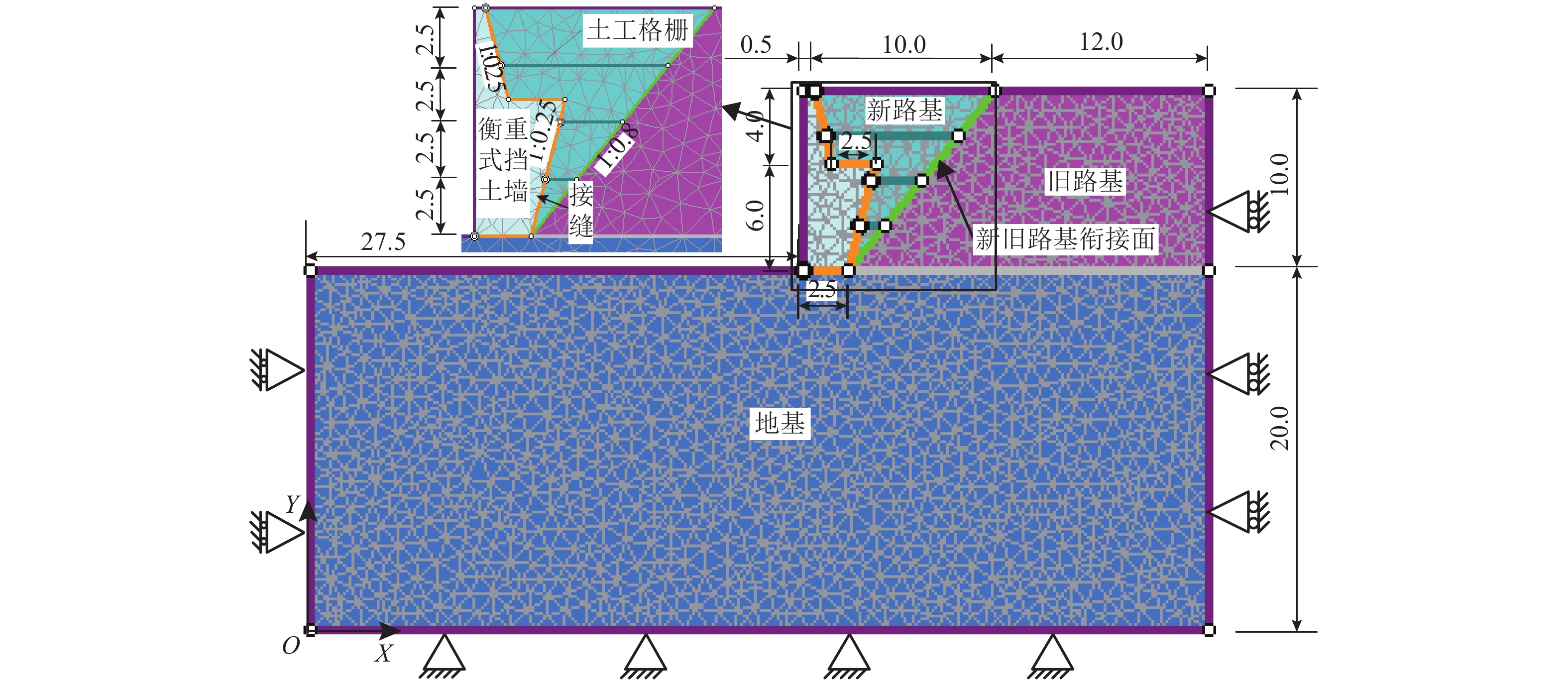
 下载:
下载:
